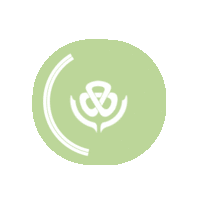American Public Gardens Association
Arizona-Sonora Desert Museum
Atlanta Botanical Garden
Australian Network for Plant Conservation Inc.
Bartlett Tree Research Laboratories and Arboretum
Betty Ford Alpine Gardens
Bok Tower Gardens
Botanic Gardens Conservation International
Botanical Research Institute of Texas / Fort Worth Botanic Garden
Brooklyn Botanic Garden
California Botanic Garden
California Native Plant Society
Chicago Botanic Garden
Cincinnati Zoo & Botanical Garden
City of Albuquerque BioPark
Coastal Maine Botanical Gardens
Cornell Botanic Gardens
CPC National Headquarters
Denver Botanic Gardens
Desert Botanical Garden
Fairchild Tropical Botanic Garden
Florida Native Plant Society
Florida Natural Areas Inventory
Harold L. Lyon Arboretum
Holden Forests and Gardens
Honolulu Botanical Gardens
Individual - Student Members
Individual-CarsonCityParksAndRecreation-forNVRP
Individual-HumboldtToiyabeNationalForest-forNVRP
Individual-MojaveDesertLandTrust-ForCaPR
Individual-NevadaDivisionOfForestry-forNVRP
Individual-NevadaDivisionOfNaturalHeritage-forNVRP
Individual-Professional
Individual-TheodorePayne-ForCaPR
Individual-UniversityOfNevadaReno-forNVRP
Individual-UtahRarePlants-forNVRP
Individual-WalkerBasinConservancy-forNVRP
Institute for Applied Ecology
Institute for Regional Conservation
Jacksonville Zoo and Botanical Gardens
Lady Bird Johnson Wildflower Center
Laukahi: The Hawaii Plant Conservation Network
Lauritzen Gardens
Longwood Gardens
Marie Selby Botanical Gardens
Mattole Restoration Council
Memorial University of Newfoundland Botanical Garden
Mercer Arboretum and Botanic Gardens
Millennium Seed Bank Partnership at Royal Botanic Gardens Kew
Missouri Botanical Garden
Montana Conservation Seedling Nursery
Montgomery Botanical Center
Mt. Cuba Center
Naples Botanical Garden
National Laboratory for Genetic Resource Preservation (USDA-ARS)
National Park Service
National Tropical Botanical Garden
Native Plant Trust
NatureServe
Newfields
North American Orchid Conservation Center
North Carolina Botanical Garden
Oregon Department of Agriculture - Native Plant Conservation Program
Plant Conservation Alliance
Polly Hill Arboretum
Rae Selling Berry Seed Bank & Plant Conservation Program
Red Butte Garden and Arboretum
Regional Parks Botanic Garden
San Antonio Botanical Garden
San Diego Botanic Garden
San Diego Zoo Wildlife Alliance
Santa Barbara Botanic Garden
Santa Fe Botanical Garden
Southeastern Grasslands Institute
St. George Village Botanical Garden
The Arboretum at Flagstaff
The Arnold Arboretum of Harvard University
The Dawes Arboretum
The Huntington
The Jones Center at Ichauway
The Morton Arboretum
The New York Botanical Garden
The North Carolina Arboretum
The State Botanical Garden of Georgia
United Plant Savers
United States Botanic Garden
University of California Botanical Garden
University of California Davis Arboretum & Public Garden
University of California-Santa Cruz Arboretum & Botanic Garden
University of Florida, Department of Environmental Horticulture
University of Minnesota Landscape Arboretum
University of South Florida Botanical Gardens
University Of Washington Botanic Gardens
US DOI Bureau of Land Management
US Fish and Wildlife Service
Waimea Arboretum Foundation
Zoo New England



